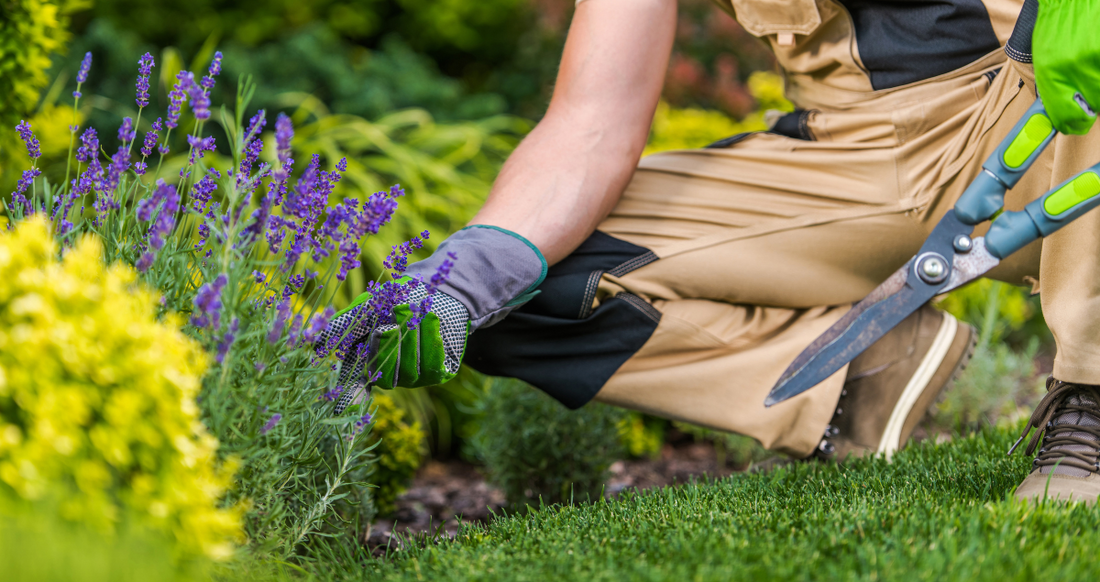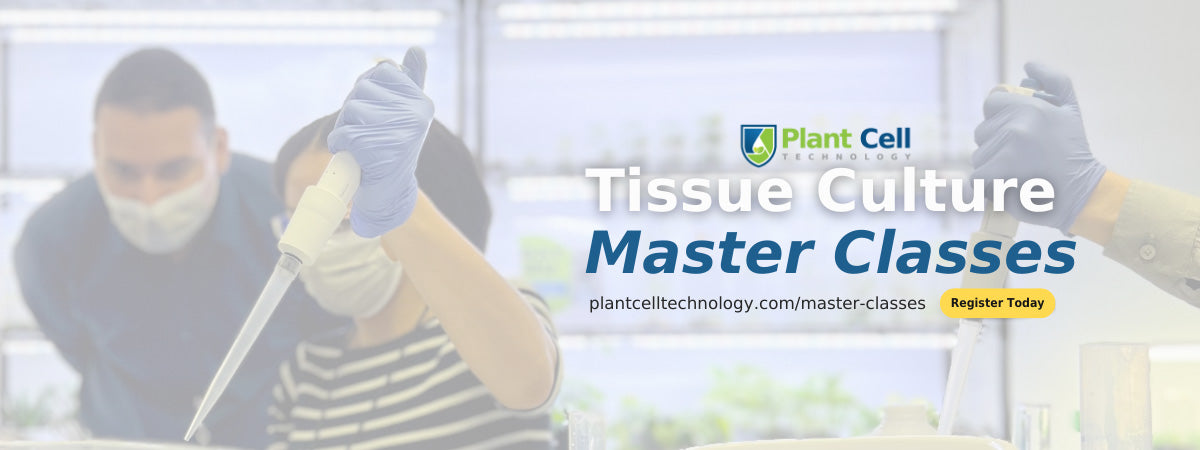
National Garden Month: Tips for Creating and Maintaining Your Own Garden
As a content and community manager, I leverage my expertise in plant biotechnology, passion for tissue culture, and writing skills to create compelling articles, simplifying intricate scientific concepts, and address your inquiries. As a dedicated science communicator, I strive to spark curiosity and foster a love for science in my audience.


Overview
Do you know April month is celebrated as a national garden month?
So, if you have been planning to create your own garden for a long time, this is the right time to get started!
Why is this so?
It’s mainly because, around this month, the warm weather works its way into our area and showers us with the opportunity to sink in our hands in solid and get them dirty planting some beautiful plants.
In 1986, the National Garden Bureau and 23 other horticultural organizations presented a proclamation to designate a week in April as National Garden Week, which was signed by President Reagan.
Later in 2002, the celebration was extended to last the entire month, as it was observed that the week-long celebration was not sufficient to celebrate the love for gardening. Hence, we now joyfully commemorate National Garden Month.
This is a perfect month for gardeners, gardening groups, and even novice gardeners to come together to exchange ideas, provide guidance, and extend support for a prosperous gardening season!
Being a plant company, we participate in celebrating this month by giving you some crazy and awesome tips on creating your lavishing garden and keeping it healthy.
This article covers the following:
- Getting Started: How Do You Create A Stunningly Beautiful Garden?
- What Plants Can You Easily Grow In Your Garden?
- What Factors Should You Consider To Keep Your Garden Plants Healthy?
- How Can Tissue Culture Help You in Creating a Gorgeous Garden With A Variety of Disease-Free Plants?
- Plant Cell Technology Helps To Level Up Your Plant Game Through Tissue Culture

Getting Started: How Do You Create A Stunningly Beautiful Garden?
We don’t disagree that creating your own garden can be daunting. However, we definitely agree that with proper planning, execution, and little attention, you can make the process achievable and fun!
Let’s see how it’s done!
- Pick the spot and Type of Garden: Many plants need 6-8 hours of full sunlight every day. Observe which part of your garden gets more sunlight and which is partially shady. This way you get to decide which type of plants to keep in the area. Take note of any shade cast by trees or buildings that may obstruct the sun's rays. Then, consider the type of garden you wish to create, such as a kitchen garden, a spread of herbs, or a flower garden.
- Test and Prepare Soil: you can either send your soil samples to soil testing centers or buy a soil testing kit for yourself to test the nutrient content and pH of your garden soil. Once you know the soil's condition, you can add compost, organic matter, and fertilizer to improve its quality. Preparing the soil properly by tilling or loosening the ground will also promote healthy root growth and enable better water retention. For example, if you have rocky soil, till the soil and remove the rocks.
- Select the Plants: Choosing the right plants is essential for a thriving garden. Consider your climate zone, the amount of sunlight your garden receives, and the soil type to determine the best plants for your garden. Additionally, decide on the colors and textures that you would like to incorporate into your garden to create a cohesive and visually appealing design. You can also peek at your neighbors to check out their gardens to see what plants are flourishing there better.
- Prepare Planting Beds: Preparing the planting beds will ensure that your plants have enough space to grow and flourish. Clear the area of any weeds or debris, and add compost or organic matter to enhance soil quality. Use a hoe to create furrows or rows for planting, and leave enough space between each row for easy maintenance. Proper space between plants is necessary to give them the space to breathe and grow!
- Start Planting and Maintain Regularly: After selecting your plants and preparing the soil and planting beds, it's time to start planting. Follow the guidelines provided on the seed packets or plant tags for the correct planting depth and spacing. Water your plants thoroughly after planting and maintain a regular watering schedule. Additionally, regular maintenance tasks such as weeding, fertilizing, and pruning will help your garden thrive throughout the growing season.

Equipment and Tools You Need
Here’re some common gardening tools that you need to get started:
- Gloves: Protect your hands from getting dirty or hurt by thorns.
- Hand trowel: For digging small holes, planting bulbs, and transplanting seedlings.
- Pruning shears: For trimming and shaping plants.
- Pruning saw: For cutting thicker branches or stems.
- Garden hoe: For digging, shaping, and weeding garden beds.
- Scuffle hoe: For removing weeds in tight spaces or between plants
- Dirt rake: For breaking up and smoothing out soil, removing debris, leveling garden beds, and preparing the soil for planting.
- Leaf rake: For collecting and removing fallen leaves, grass clippings, and other light garden debris from lawns and garden beds.
- Garden fork: For turning and aerating soil, and breaking up clumps.
- Garden Shovel and/or D handle Shovel: For digging planting holes, removing weeds or sod, transplanting plants, and spreading compost or other soil amendments.
- Garden kneel pad: To provide cushioning and support for your knees when you are working on the ground in the garden.
- Dramm Hose: For efficient and effective watering of your plants.

Plants You Can Easily Grow In Your Garden
Depending on your climate, soil conditions, and gardening experience, you can grow a wide range of plants in your garden. Here’re 10 plants considered to be easy to grow:
- Tomatoes
- Marigolds
- Herbs
- Sunflower
- Lettuce
- Hibiscus
- Basil
- Ghost Plant, Graptosedum
- Aloe Vera
- Lemon Coral
What Factors Should You Consider To Keep Your Plants Healthy?
The right environment is crucial for the healthy growth and development of plants. So, five factors that you should consider and look into to keep your plants healthy are:
- Light: Some plants prefer shade and others prefer full sun to grow well. Thus, you should understand the requirements of your plants. For example, desert plants prefer full sunlight to do well in your garden. Further, you should also know that the intensity of light varies throughout the year, with shorter days and less light during winter and increasing light intensity during spring. For example, the light and temperature increase during spring, and plants are stimulated to grow new leaves and break dormancy.
- Water: One common mistake every beginner do is flooding the plants with water. You should know this rots the roots of plants and kills them. Every plant has different water requirements, so understand your plants before watering them. For example, succulents and cacti need only a little water to grow as they are adapted to a desert environment.
- Temperature: Plants have an optimal temperature range for growth, which varies by species. Extreme temperatures, whether too hot or too cold, can stress plants and cause damage or death. Plants can also be affected by temperature changes, such as those caused by seasonal shifts or changes in their environment.
- Nutrients: Plants require a variety of nutrients to grow and thrive, including nitrogen, phosphorus, potassium, calcium, and magnesium, among others. These nutrients are typically obtained from the soil, but can also be provided through fertilizers or other supplements. A lack of nutrients can result in stunted growth or other issues, while excess nutrients can be harmful to plants.

How Can Tissue Culture Help You in Creating a Gorgeous Garden With A Variety of Disease-Free Plants?
Tissue Culture is an advanced technique of plant propagation. It involves taking a small piece of plant or plant tissue and introducing it to nutrient media in a controlled lab environment.
Tissue culture offers several advantages over the traditional approaches, which include:
- Plantlets can be grown quickly using tissue culture.
- A small amount of plant tissue is enough to start the process.
- The resulting plants are less likely to have viruses or diseases.
- Tissue culture can be done at any time of the year, regardless of the season.
- The process requires less space compared to traditional growing methods (you can have ten times the plants in one-tenth of the space).
- On a larger scale, tissue culture helps supply the market with new subspecies and varieties.
- Tissue culture is particularly useful for growing challenging plants such as specific orchid breeds.
Primarily, it’s used to create a variety of ornamental plants, disease-free plants, or commercial-scale propagation of some highly demanded plants.
Because these plants are grown in sterile conditions, they are free from diseases and pests. However, the plants must be well-acclimated before introducing into a normal environment.
You can either purchase tissue-cultured plants for your garden or grow your own. However, the process can be a bit costly. You’ll be needing at least $5K to set up a basic tissue culture lab.
However, finding everything on your own can be a daunting task, starting from understanding the requirement, and choosing the right plant source, and media preparation, to finding suitable protocol, plant acclimation, and more!
That’s why we’re here for you!
We make the process easier for you!

Plant Cell Technology Helps To Level Up Your Plant Game Through Tissue Culture
Plant Cell Technology is a leader in the tissue culture area. For decades we have been helping tissue cultures in their plant propagation journey using the advanced technique.
From supplying all the required materials to providing consultations to solve your tissue culture-related problems, we strive to help you in every way we can to make tissue culture operations easier, smoother, cheaper, and better than before.
To help beginners like you, who are new to tissue culture and want to venture into the tissue culture area, we conduct tissue culture master classes to teach you everything about tissue culture.
From basics to explant cutting, surface sterilization, media preparation, shoot tip culture, and syn seed formation, we cover everything to prepare you to build your own tissue culture lab and get started into it. We also hand you working protocols, tested in our labs, for some plants, to make your tissue culture journey easier.
So, if you want to kickstart your tissue culture journey, sign up for your favorite tissue culture master class here NOW!
Blog Categories
View by Level
Popular Blogs

6 Plant Tissue Culture Books to Keep Learning
Introduction Most of us are fans of books when it comes to learning a topic in detail and in a...
Read More
New Technical Agar Vs Supreme Agar
Introduction What’s the secret element that supports and holds plants in vitro? Not sure? It’s the solidifying agent. Solidifying agents...
Read MoreSubscribe to Our Newsletter








Join the conversation
Your email address will not be published. Required fields are marked